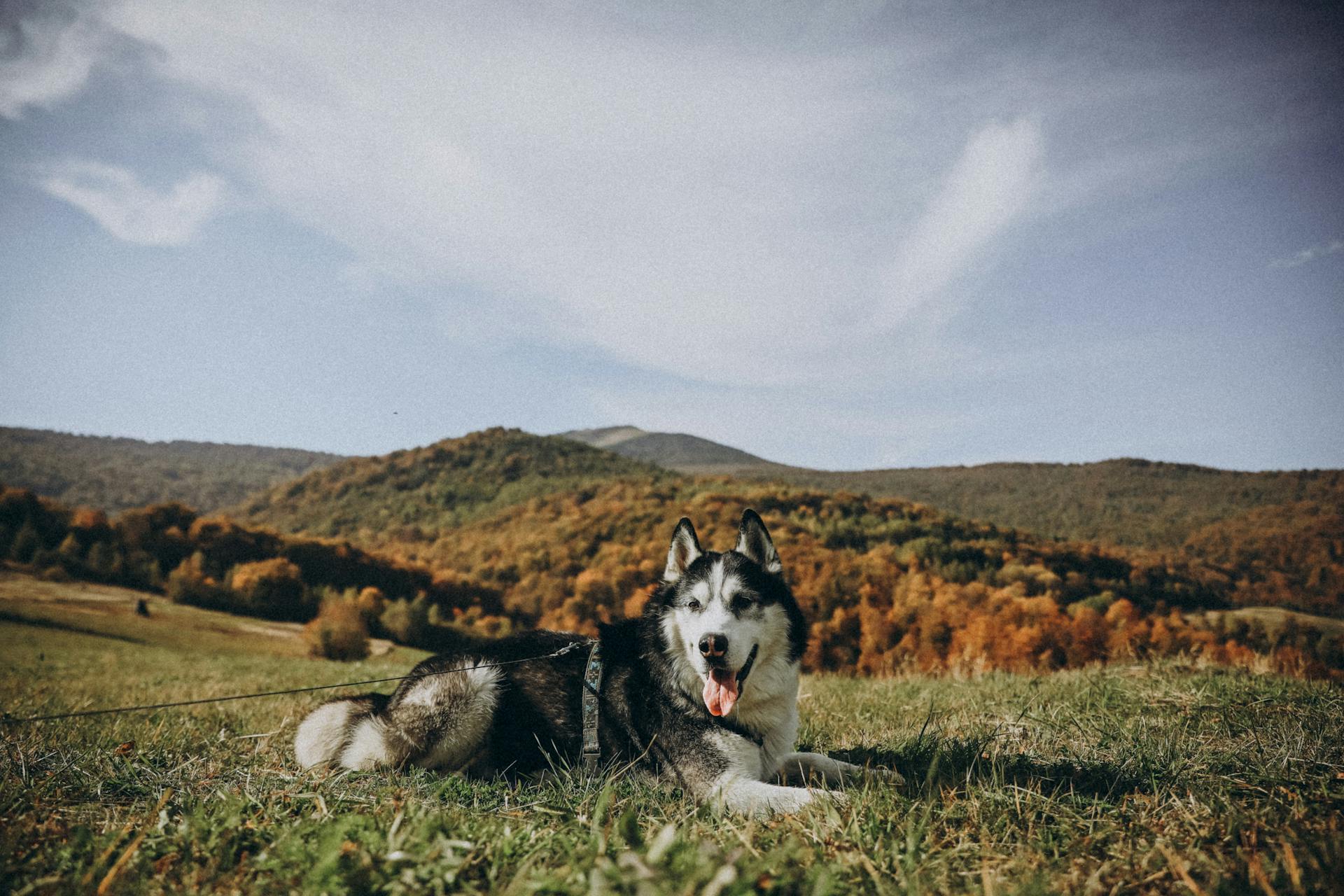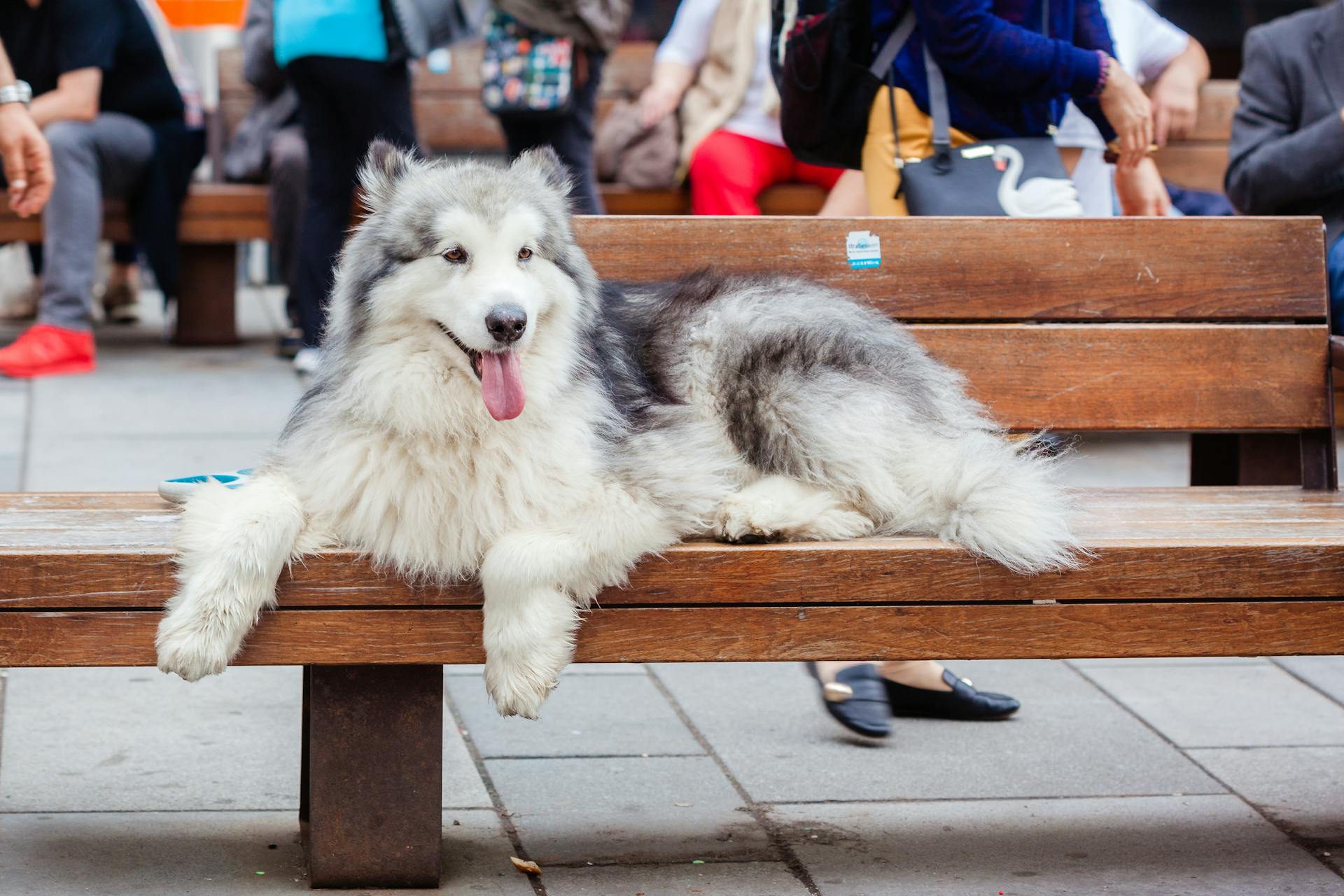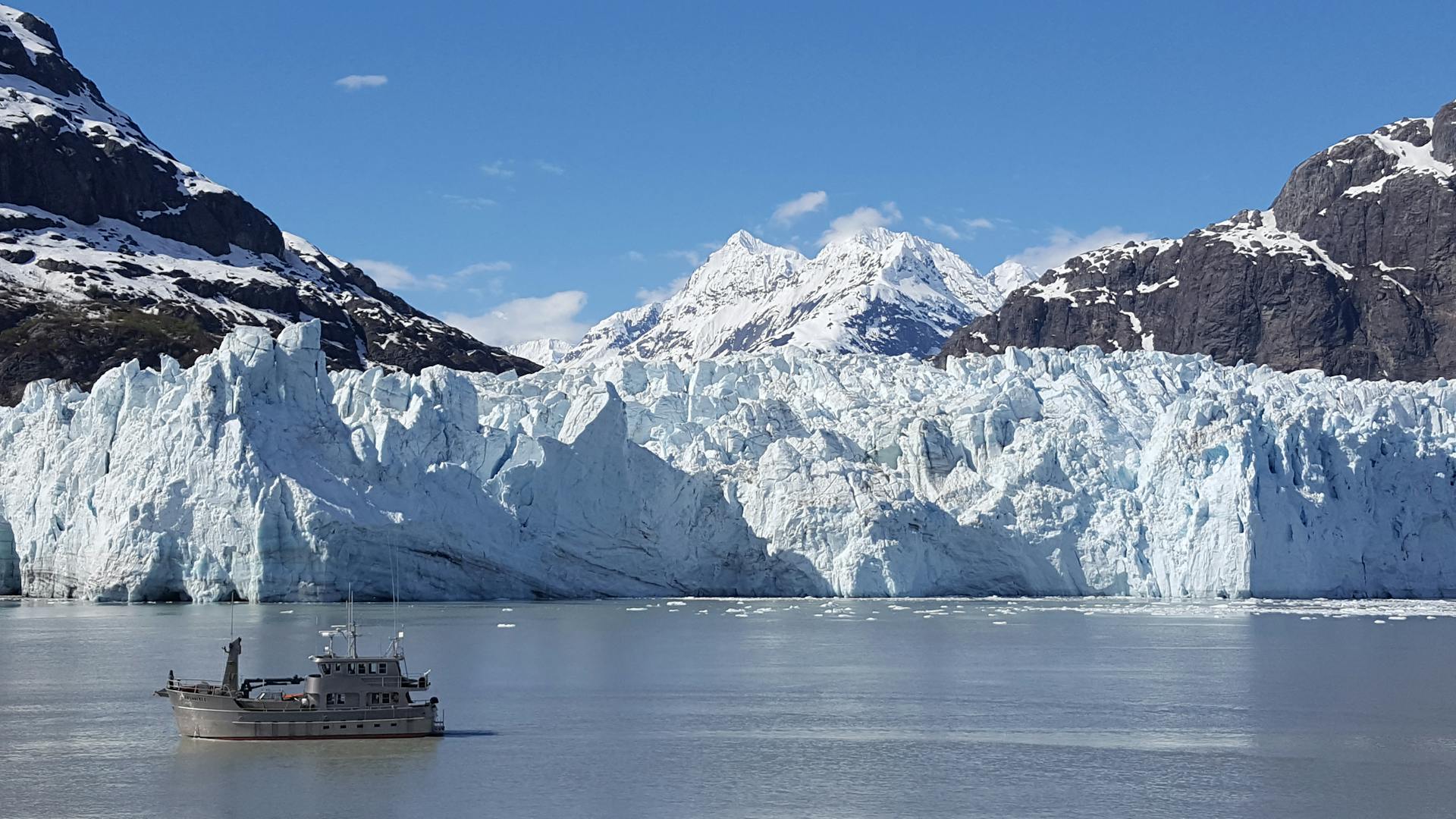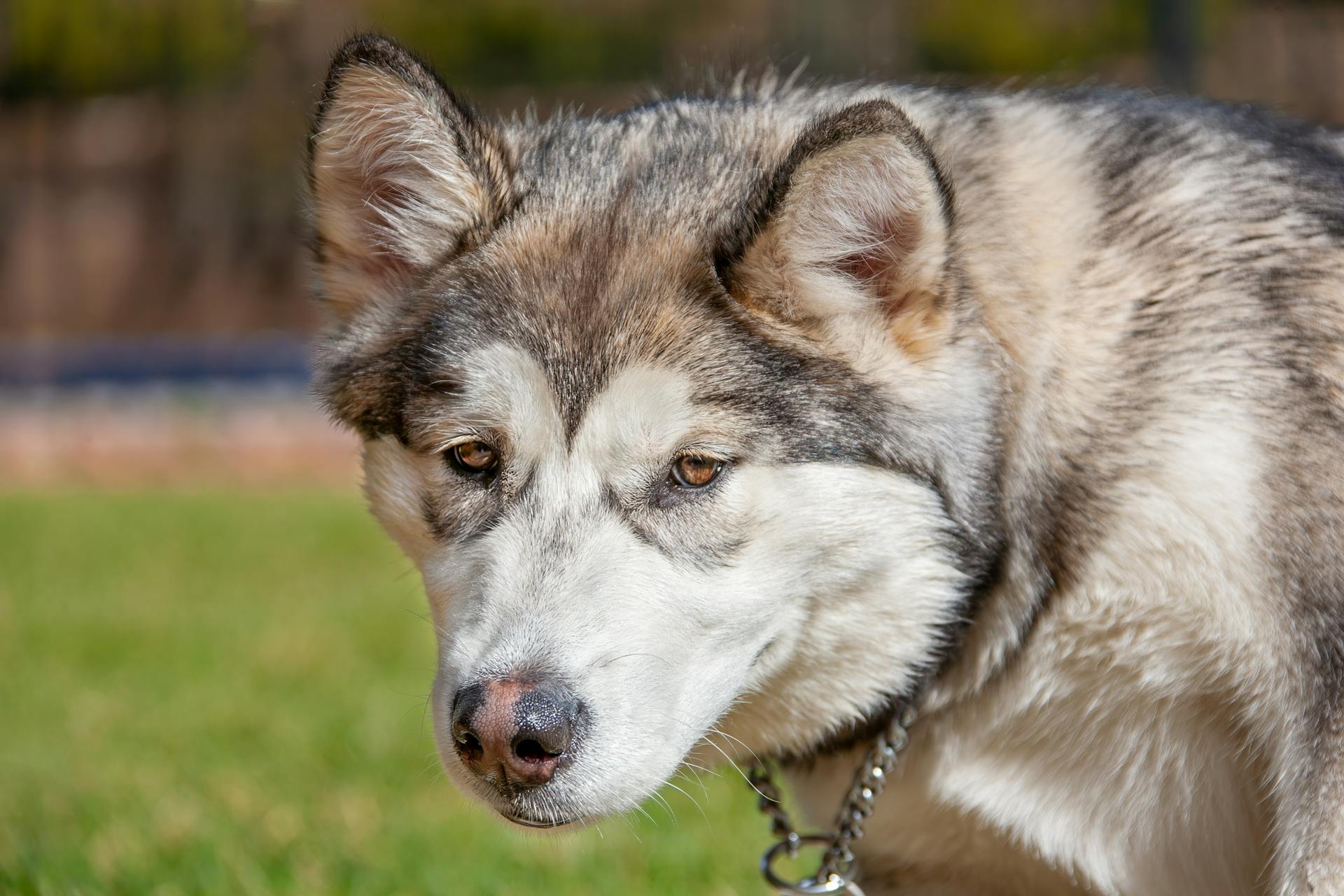
Giant Alaskan Malamute puppies are a rare and special breed. They can weigh up to 100 pounds and stand as tall as 26 inches at the shoulder.
Their large size requires extra space and exercise, so it's essential to have a spacious home and a yard where they can run around. A minimum of 1/4 acre of land is recommended.
Giant Alaskan Malamute puppies are known for their intelligence and strong will, making them a challenging breed to train. They require consistent and patient training from an early age.
These puppies have a thick double coat that sheds heavily, especially during shedding season. Regular brushing and grooming are necessary to prevent matting and tangling.
Characteristics and Temperament
Giant Alaskan Malamute puppies are naturally friendly and outgoing, making them great companions for families who are willing to provide them with the attention and exercise they need.
These dogs are pack animals that thrive on human interaction, and they'll often attempt to make friends with strangers rather than defend their territory. With their strong instincts as sled dogs, they're built for endurance and have a ton of energy to burn off.
One thing to keep in mind is that Malamutes don't make great guard dogs due to their friendly nature, and they'll likely try to play with would-be intruders rather than chase them away. They're also expert escape artists, so a well-fenced yard is a must.
Here's a summary of their key characteristics:
With their thick double coats and "wolf-like" eyes, these dogs are built for strength and endurance. They're also known for their intelligence and trainability, but they can be stubborn at times.
Oldest Arctic Sled Dogs
The Alaskan Malamute is one of the oldest Arctic sled dogs, with a history dating back almost 4,000 years. They were developed by the nomadic Inuit tribe, the Mahlemiut, from whom they got their name.
These dogs were bred to be working sled dogs, used to cover massive distances with heavy loads through cold conditions. They would do this at a slow but steady pace, which is what sets them apart from their Husky cousins.
Their slow and steady approach makes them well-suited for pulling heavy loads, whereas Huskies are better suited for lighter loads at faster speeds.
Characteristics of Malamutes
Malamutes are incredibly affectionate dogs, with a high affection level that makes them lovable members of your family. They thrive on human company and are pack animals that require a strong leader.
Their temperament is often described as friendly, outgoing, and trusting, which makes them less suitable as guard dogs. In fact, they'll often try to make friends with strangers rather than chase them away.
Malamutes are highly energetic dogs that require regular exercise to keep them happy and healthy. They need a large area to play in and should be left alone as little as possible, as they can become destructive if bored or frustrated.
Here are some key characteristics of Malamutes:
If you're considering bringing a Malamute into your family, be prepared for a loyal companion that requires regular exercise, training, and attention. With the right care and commitment, they'll reward you with a loving and playful friendship.
Care and Upkeep
Giant Alaskan Malamute puppies require a lot of exercise every day, either in the form of a long walk on leash or the opportunity to run.
They love cold weather and especially love the snow, so if you live in a cold climate, this breed will thrive.
Their thick, waterproof double coat needs brushing once or twice a week, more when shedding, to prevent matting and keep them looking their best.
You'll need to be prepared to give your dog a thorough brushing at least several times a week, and daily brushing is recommended to keep fur flurries under control.
Giant Alaskan Malamutes shed frequently and in huge amounts, so regular brushing is vital to remove excess hair and prevent it from taking over your home.
Investing in a dog vacuum is a good idea when owning a Malamute, as the amount of hair they shed can be mind-blowing, even with daily brushing.
See what others are reading: Shar Pei Dog Shed
Care
Providing clear, firm leadership is essential for an Alaskan Malamute, as they respond well to direction and guidance.

This breed requires considerable grooming, with a thick, waterproof double coat that sheds heavily, especially during seasonal changes.
You'll need to brush your Malamute at least several times a week, with some recommending daily brushing to keep fur flurries under control.
Regular baths are also advised to help cut down on shedding and that not-so-great, smelly dog odor.
Daily brushing is a must to prevent matting, which can lead to fungal infections.
The Alaskan Malamute Club of America suggests brushing to help avoid matting and recommends regular baths to reduce shedding.
Be prepared to give your dog a thorough brushing, especially during periods of heavy shedding, which can occur twice a year in spring and fall.
You'll need to use an undercoat rake to keep stray fur from taking over your home during these periods.
Investing in a dog vacuum might be a worthwhile idea when owning a Malamute, as they shed frequently and in huge amounts.
Their coat needs brushing once or twice a week, more when shedding, to keep them looking their best.
Check this out: When Should You Mate a Female Dog
Exercise
Alaskan Malamutes are built for endurance and need regular exercise to stay happy and healthy. They love to run for miles and need daily physical activity to keep them in shape.
A large yard is a good start, but it's not enough to satisfy their exercise needs. Malamutes require structured exercise to keep them active and well-balanced.
In suitable climates, they're a great choice for hiking and backpacking, running, or even swimming with their owners. If you're looking for more advanced options, your Malamute can also be trained for agility sports.
Malamutes have an incredible amount of stamina, and it can be a challenge to tire them out. They'll need at least 2 hours of intensive exercise every day.
This includes long walks and runs, as well as games like fetch or agility exercises. They'll benefit greatly from mentally stimulating activities too, as they were bred to complete specific tasks.
Discover more: Border Collie Agility Dogs
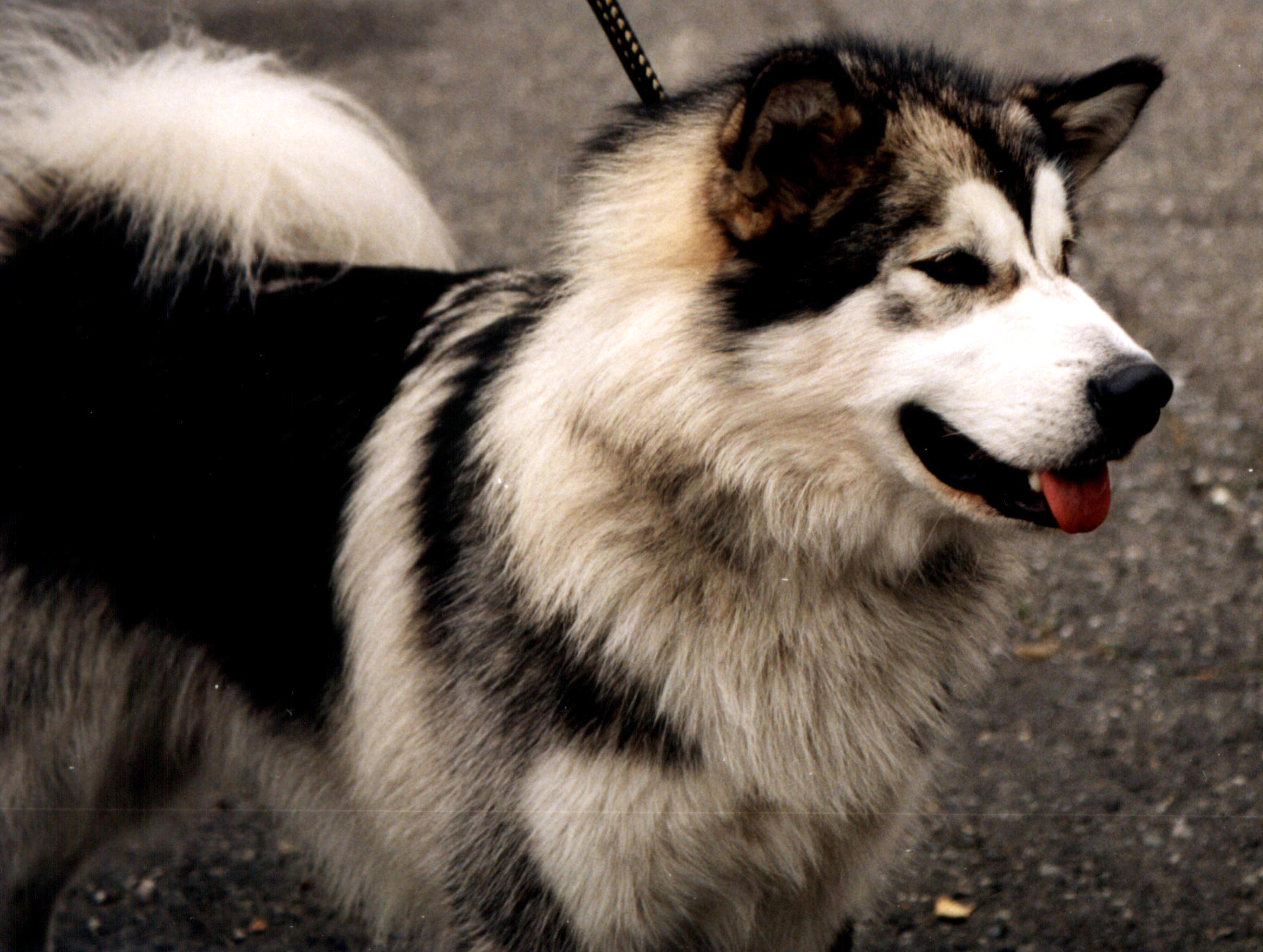
They love to have a job to do, so anything from Bikejoring – pulling someone on a bike – to agility classes will keep your Malamute in shape and stimulated enough that they won't tear up your house out of boredom.
In hot summer months, be careful not to overdo exercise, as they can swiftly overheat. Their thick double coats are ideal for cold climates, but need extra care in warmer temperatures.
Health and Nutrition
Giant Alaskan Malamute puppies are prone to joint issues, so a healthy diet and regular exercise are crucial to prevent problems like chondrodysplasia, elbow dysplasia, and hip dysplasia.
Feeding your Malamute a quality diet is essential for their health and happiness. They can be prone to overeating or developing Bloat from gulping down their food too quickly, so it's recommended to feed several smaller meals per day rather than one to two larger portions.
A well-planned diet and portion schedule based on your Malamute's age, weight, and activity level can help prevent excessive weight gain or canine obesity, which can lead to other health problems.
A fresh viewpoint: Bernese Mountain Dog Hip Dysplasia
Here are some common health issues to be aware of in Giant Alaskan Malamutes:
- Obesity
- Bloat
- Progressive retinal atrophy
- Cataracts
A healthy diet and regular exercise can help prevent some of these issues, but it's also essential to monitor your Malamute's food intake and ensure they're getting the nutrients they need to stay strong and happy.
Not Suitable for Allergy Sufferers
If you or a family member suffers from allergies, it's essential to consider this before bringing an Alaskan Malamute into your home. Their coats 'blow', which means they shed heavily throughout the year, and especially during seasonal changes.
This shedding can trigger allergy symptoms in some people. Alaskan Malamutes shed their fur so much that you could practically make a second dog with the fur, especially during spring and fall.
Females tend to shed more than males, and this can be a significant issue for allergy sufferers. Spaying your female Alaskan Malamute may reduce the shedding, but it won't eliminate it completely.
Allergies may flare up during the Malamute's shedding season, so it's crucial to consider this before bringing one home.
Consider reading: Do Border Collies Shed a Lot
Diet and Nutrition
Diet and Nutrition is a crucial aspect of keeping your Alaskan Malamute healthy and happy.
Feeding your Malamute several smaller meals per day can help prevent overeating and Bloat, a serious condition that can be life-threatening. This is especially important for large breed dogs like the Alaskan Malamute.
A quality diet with high-quality, nutrient-dense ingredients is essential for your Malamute's overall health. Look for food with at least 25%-40% protein and avoid empty calories.
Giant Alaskan Malamutes need around 6 cups of dry kibble per day, with the first listed ingredient coming from an animal source. You can also consider substituting their kibble with lean meats and organ meats occasionally to provide variety and essential amino acids and healthy fats.
To prevent obesity, monitor your Malamute's food intake and avoid free-feeding or giving too many table scraps. A healthy diet and regular exercise will help keep your Malamute strong and happy, and prevent potential health issues like arthritis and joint problems.
Here are some general guidelines for feeding your Alaskan Malamute:
Training and Adoption
Training a giant Alaskan Malamute puppy requires patience and consistency, especially during their formative years which can last up to 3 years old.
These dogs are highly intelligent and independent, but can be stubborn at times, making them a challenge to train for novice owners.
Obedience training from puppyhood is crucial to raise a dog that respects and listens to you as it grows larger and stronger, and can prevent them from pushing around other pets.
Malamutes are notorious diggers and will dig holes in your backyard if given the chance, so it's best to give them their own spot to dig rather than trying to train them to stop.
Check this out: Bull Terrier 100 Years Ago
Training
Training an Alaskan Malamute requires patience and discipline, as they can be stubborn at times.
They are highly intelligent dogs that know how to please their owners, but this doesn't mean they'll always listen.
You'll need to start obedience training from puppyhood to raise a well-behaved dog that respects you as it grows larger and stronger.
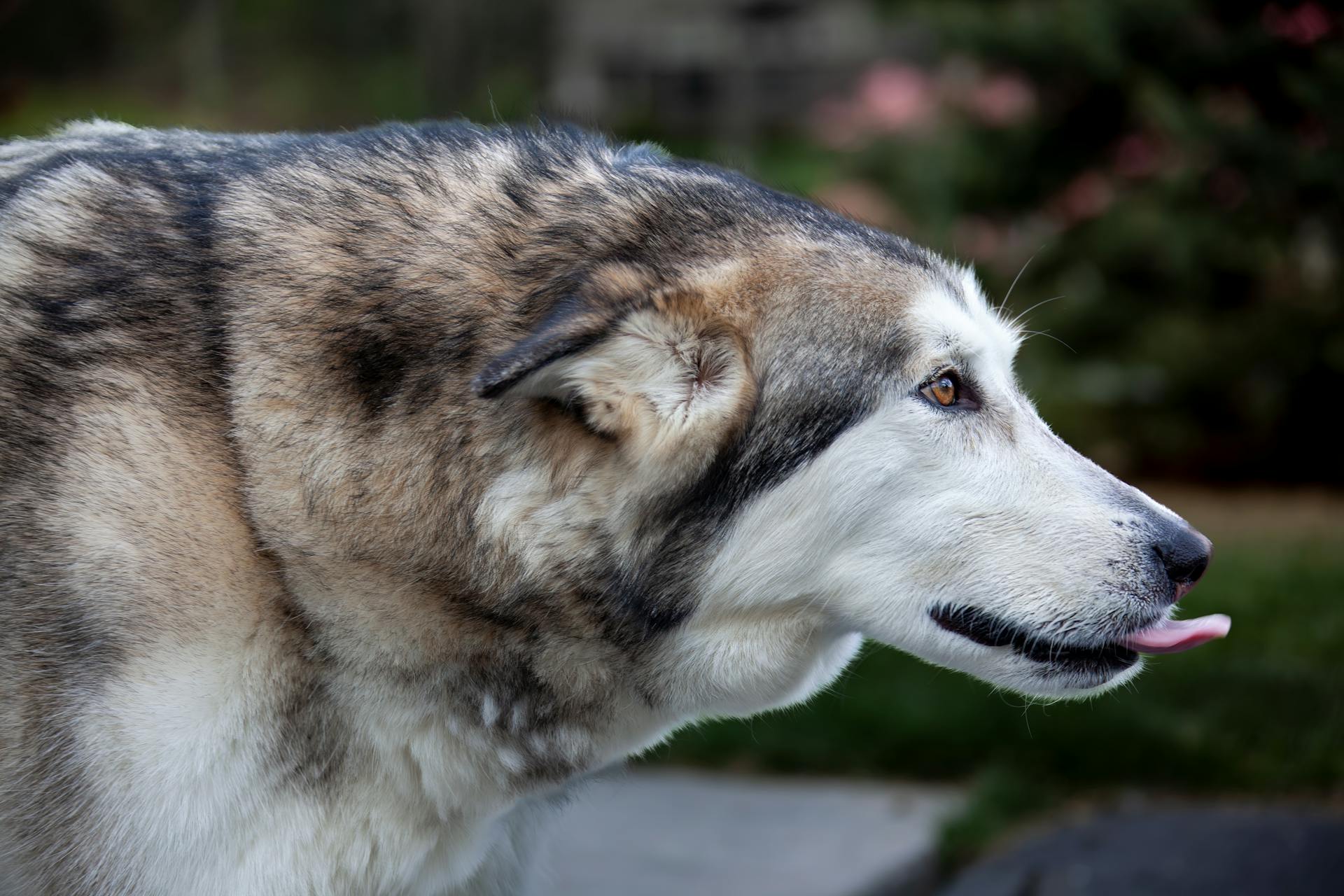
Malamutes are slow-growing and slow-maturing dogs, typically reaching full maturity at around 3 years old.
This can make training challenging, especially during their formative years when they retain their puppy-like averseness to being told what to do.
They have a strong instinct to dig, and it's not easy to train out of them, so be prepared for holes in your backyard if you don't give them a designated digging spot.
If this caught your attention, see: 100 Years Ago Original Boston Terrier
Adopt/Buy
If you're considering bringing an Alaskan Malamute into your home, you have two main options: adoption or buying from a reputable breeder.
Adoption is a fantastic way to give a dog in need a second chance, and it's often much more affordable than buying from a breeder. Adoption fees typically range from $300 to $600 and usually include spaying or neutering, microchipping, and essential vaccinations.
You can find Alaskan Malamutes in need of a forever home through national and regional rescue organizations, such as the Alaskan Malamute Assistance League.
A unique perspective: German Shorthaired Pointer Free to Good Home
If you do decide to buy from a breeder, be prepared for a significant investment. Puppies typically cost between $1,500 and $3,000, depending on the breeder, lineage, and location.
Some reputable breeders also include essential health screenings, vaccinations, and initial training in the price of the puppy, which can be a great value.
Here are some resources to help you find a reputable breeder or adopt an Alaskan Malamute:
- Alaskan Malamute Assistance League
- Alaskan Malamute Club of America Breeder Listing
- AKC Alaskan Malamute Breeders
Final Thoughts
Training a Giant Alaskan Malamute requires serious consideration and a significant amount of time and effort.
They can be a real challenge for novice owners to train due to their strong will and independent nature.
Giant Malamutes need a great deal of grooming and attention, which can be overwhelming for some owners.
A large space to run around in and several hours a day devoted to exercise are essential for their physical and mental well-being.
If you're willing and capable of meeting these challenges head-on, the Giant Alaskan Malamute is an incredible animal that you'll form a powerful bond with.
They are one of the most unique and beautiful dogs out there, but remember, they're not for everyone.
Readers also liked: Shiba Inu Owners
Frequently Asked Questions
Why is my Alaskan Malamute so big?
The Alaskan Malamute is a large breed due to its original purpose as a sled dog, bred for strength and endurance to haul heavy freight. This physical build is a result of its centuries-old history as a working dog.
What's bigger a husky or a Malamute?
An Alaskan Malamute is generally larger than a Siberian Husky, weighing 75-85 pounds compared to the Husky's 40-60 pounds. This size difference is one key way to tell these two breeds apart.
Do giant Alaskan malamutes shed?
Yes, giant Alaskan Malamutes shed heavily due to their thick double coat, requiring regular brushing and frequent vacuuming. They also experience a seasonal blowout twice a year, typically in spring and autumn.
Sources
- https://www.thesprucepets.com/alaskan-malamute-dog-profile-4768737
- https://www.petfinder.com/dogs-and-puppies/breeds/alaskan-malamute-dogs-puppies/
- https://www.greenfieldpuppies.com/alaskan-malamute-puppies-for-sale/
- https://www.hepper.com/giant-alaskan-malamute/
- https://dogtime.com/puppies/75761-alaskan-malamute-puppies
Featured Images: pexels.com
